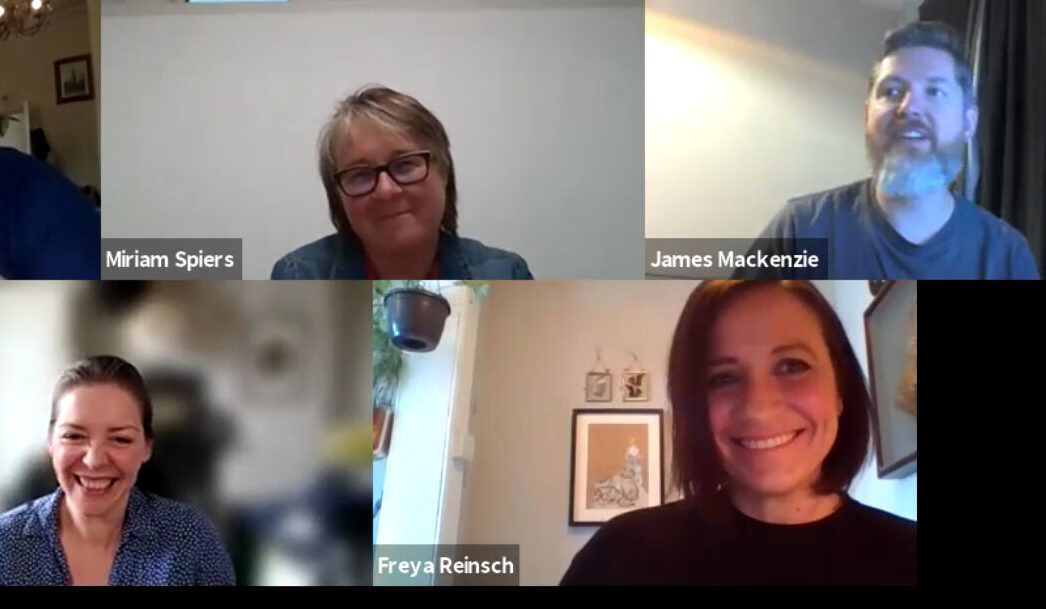The Buyer talks to Alliance Wine’s on-trade sales director, Miriam Spiers, Freya Reinsch, who heads up Scottish on-trade sales, Holly Sharpe, head of London on-trade and James Mackenzie, head of UK marketing, about their individual roles but also how they work as a team to offer the best possible service to their on-trade customers.
Miriam Spiers, one of the beating hearts of Alliance Wine having been with the business for close to 20 years, is quick to answer the all encompassing question about what makes Alliance Wine so different and special to work with. It is all down to its people, she says.
But interestingly she goes on to say it is not the fact they are all the same that counts, but the fact that Alliance has always “from the start been a very eclectic mix of people” that has driven the business forward and made it different.
Whereas it is possible to point to the personality and the influence of one person as being the keyforce behind some of its competitors, at Alliance it is very much the sum of its people that counts, she claims.
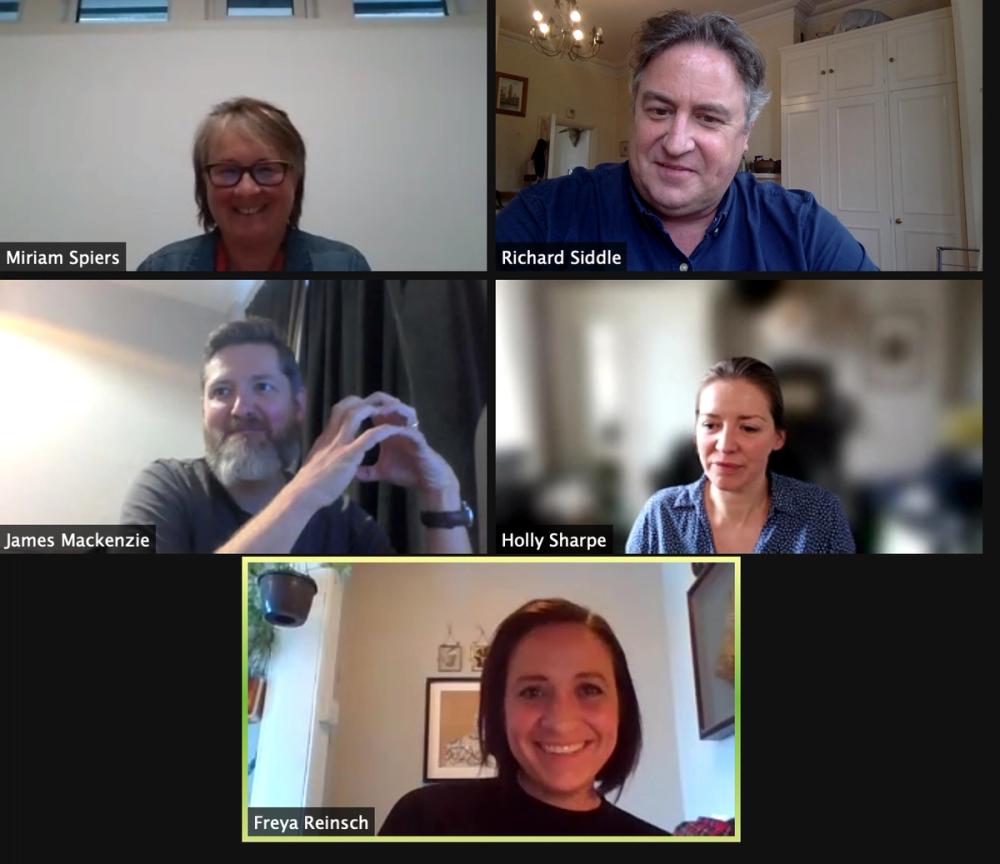
Alliance Wine is very much the sum of its part with each member of staff encouraged to bring their own personality and drive to their roles.
From the business skills of its French founder, Christian Bouteiller, who had the vision to come to Scotland to start a wine business, through to the creativity and imaginations of Giles Cooke MW and strong leadership skills of Fergal Tynan MW, she adds. It was their desire and ability to search the world for the interesting, up and coming, but, crucially, every day commercially focused “real” wines that have became the backbone of its range.“It’s a true mixture of different angles,” she says.
That’s the platform on which Alliance is built. The desire to discover, new, emerging and trend setting wines, but ones the team know its customers will enjoy and be able to sell in their shops, merchants, restaurants and bars. Anyone who joins then becomes part of that “mixture” of talent that gives Alliance its DNA, she adds.
“What makes up the heart of Alliance’s portfolio is the core of small independent producers and family businesses that have been around for generations that we have been working with from day one,” she adds.
Where Alliance and its team comes in is not just then pushing those wines out to its customers, but helping them sell them as well, she stresses. It sounds simple, but that is what the Alliance story has been built on.
“That has always been our core and what we have devised our business strategy on. We always have something more than just the product to offer our customers.”
Individual, open minded and passionate
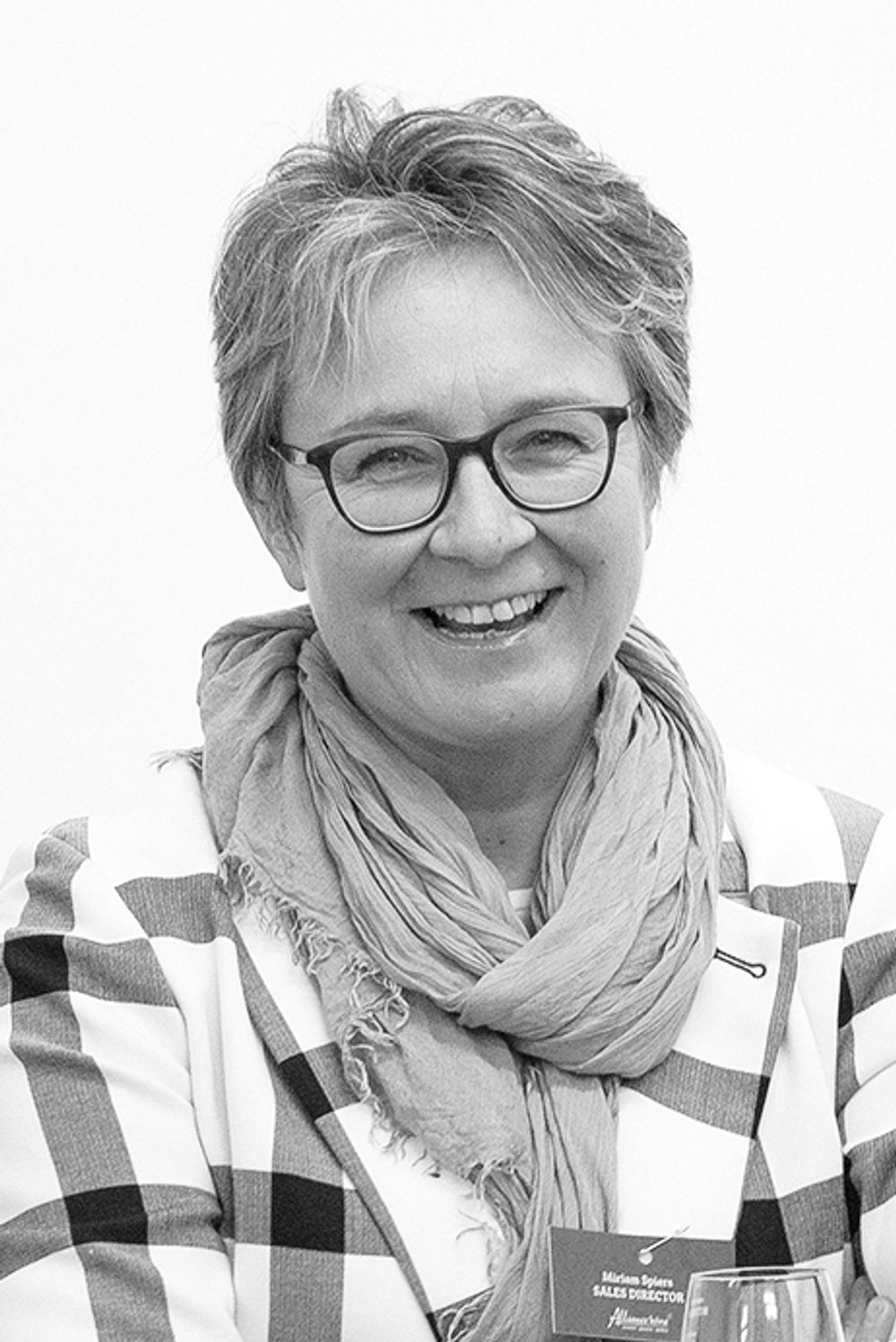
Miriam Spiers says it is Alliance Wine’s ‘hands on’ management approach that makes sure it is always changing, adapting and listening to customers
Interestingly when the panel is asked if, as Alliance people, they share any personality characteristics Freya Reinsch jumps in first by saying, “individuality,” before Spiers adds “open mindedness” and “hands on”.
“We want to break the tradition and the box that the wine business is put in,” adds Spiers. It’s why Alliance’s mission statement has always been to “Build a better world of wine”. “There is so much we want to do to improve our industry. That is what drives us,” she says. “Finding more creative ways that we can share these amazing wines not only with our customers but help them to share with theirs. We are lucky to live in a time when there is more and more exciting wine being made all over the world and we need to work harder in bringing them to the everyday table. It simply is not enough to put them in ever expanding catalogues of wines and fill many tasting tables with them. We need to do more to help to sell them on.”
It is very much a culture, a spirit and an attitude that drew James Mackenzie to the business over five years ago, from a career that has seen him work for both producers – Australian Vintage, Seresin and Huia Vineyards – and the marketing department at Bibendum. “We are not traditional in any sense,” he claims. “We don’t want to appear stuffy or mainstream.”
He agrees with Reinsch there is a “sense of individuality” within Alliance Wine, but there is also a “collective passion and love for wine” that they want to share with the customers and producers “that feel the same way”.
He says the chance to join Alliance felt “like the completion of a circle” for him where he was given the opportunity to help “reboot” its marketing by putting the focus firmly on its producers and finding as many ways as possible to “tell their stories”. “It’s a kid in the sweet shop situation really,” he says.
Fresh approach
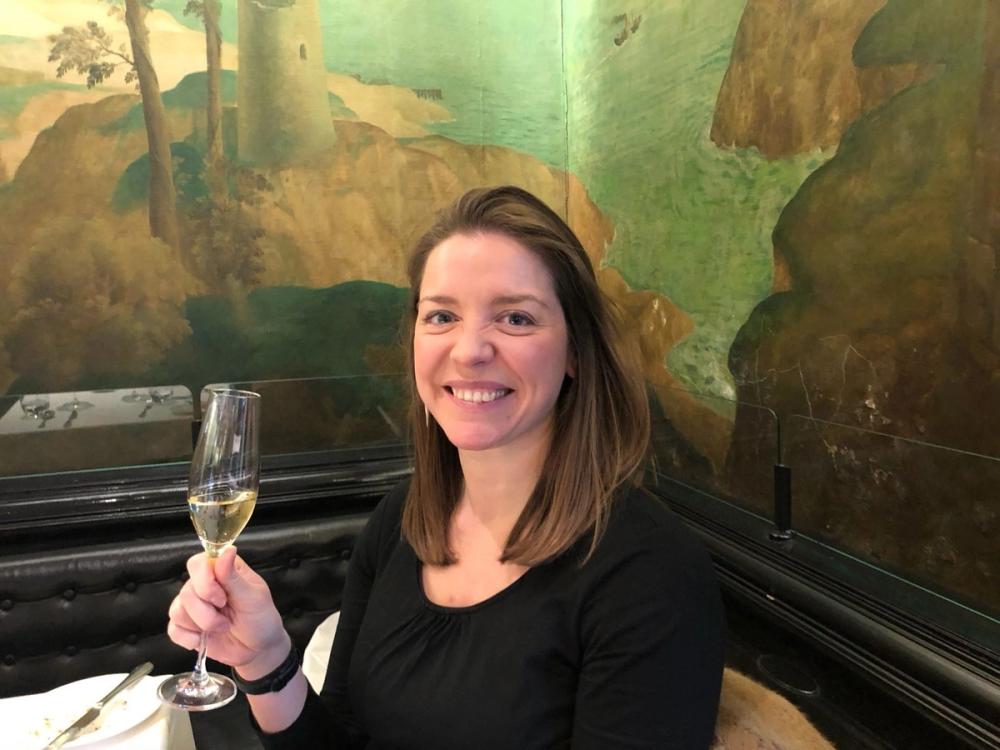
Holly Sharpe is enjoying working with what she calls “real wines for real people” at Alliance Wine
Holly Sharpe is well placed to give a fresh perspective on what it is like to work for Alliance Wine compared to other wine companies as she only joined the company less than three months ago, after periods most recently with Justerini & Brooks and Armit Wines and previously Bibendum and Majestic.
For her it was the chance to get back into the nitty gritty of the day-to-day of on-trade that drewSharpe to Alliance Wine. She says she had spent the last decade working more on the traditional and fine wine side of the trade, which whilst it was a great opportunity to taste and work with some of the world’s finest producers, meant she felt she was “in a bit of a bubble” and wanted to get back to “selling real wine for real people”.
“I just love the energy of selling into the on-trade and have always had a huge respect for Alliance Wine. They have such a diverse range of customers,” she says.
Within a couple of months she is already enjoying the “dynamism” in the business and the fact “if you decide to do something it happens”.
Again she goes back to the range and the fact for every wine, regardless of price point, there is an intriguing back story about how it was made and the people behind it. “It’s all hand crafted by real people. That’s definitely the USP that drew me into the business. The range is so diverse you can help people with any kind of wine problem and a be real service to them.”
Freya Reinsch says Alliance Wine has given her the platform to do what she loves doing – talking about and selling wine. A passion she first found working for three years with Luvians, the award winning Scottish independent wine merchant in St Andrews.
But it is actually her background working in craft beer, both at Luvians and then at Brewdog and Drinkmonger in Scotland, that gives her a “frame of reference” point for what she likes about Alliance. She loved how craft brewers were able to capture the consumer’s “huge appetite” for adventure and experimentation in an open way that wine often struggles to do. She feels she has found that same spirit at Alliance Wine to do the same and bring really interesting wines to life.
It means she and her team are able to go to bar and restaurant customers with diverse craft beer and spirits ranges and offer them something equally exciting from wine too. Where it works particularly well is where the three drinks categories complement each other and encourage customers to experiment across all three.
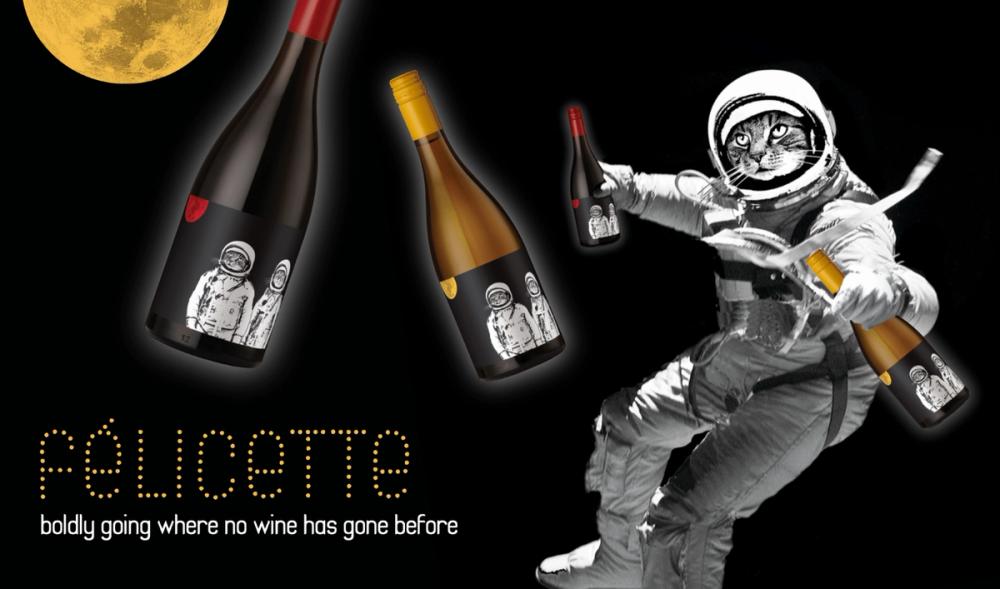
Cats in spacesuits!? Why not if it helps introduce different grape varieties from classic French regions
“Our portfolio has wines that are left field but in an accessible way,” she adds pointing to the success it has had with its Félicette range of French wine. “We’ve got cats on spacesuits that are getting people acquainted with traditional southern French varietals. Nobody is bothered that there is not a grape variety on those labels that they don’t know. It’s the whole package and what’s inside it that backs it up. It’s expanded their horizons and that is what we are seeking to do both with producers and with the styles that are available.”
But, she quickly adds, those type of wines also have to “have business justification and sense” that means it is “successful for the operators and helps them deliver better customer experience– we want everyone along the supply chain to benefit from what we are trying to to do”.
She admits when she first joined Alliance she did not have any wine distributor experience but it immediately “felt like the most exciting place to be” and “very much about bringing people together” and the chance to find the right wine for the right restaurant customer.
Clear channel focus
Alliance Wine has always had a strong multi channel approach with a clear business strategy to have different wines marketed and sold to its wholesale, on and off-trade customers and international contacts. Whilst others in the trade have got themselves in hot water for selling the same wines across channels, Alliance has make channel management a clear point of difference in want they do from day one, stresses Spiers.
This approach is also carried on into the on-trade where it directly supports and sells its range of wines into London and Scotland, but then only supplies regional wholesalers to cover the rest of the country. “That way”, she adds, “we are not competing with our own wines being sold through different routes, but we can also fully utilise all our on trade experience and share them with our key wholesalers. It’s a win-win. Our on trade workshops that we have been doing for a number of years have proven very successful and really strengthened our partnerships with our wholesalers.”
“Our USP is not jut the wines themselves, but the know-how and support we can pass on,” says Spiers. “Our growth in all our channels shows it is a strategy that works really well.”
Re-assessing customer relationships

Freya Reinsch says lockdown gave Alliance Wine the time and space to really re-evaluate its offer to the on-trade and how it can best help customers now they are opening up again
That multi-channel – and international – approach certainly helped Alliance Wine during Covid-19 and the on-going on-trade lockdown and trading restrictions.
For the on-trade team it has meant a unique time to stop, analyse and re-assess what it has been doing in the on-trade and whether it has delivered the results it wanted and what it can look to do better vs its competitors, says Reinsch. “We have tried to come up with more tangible ways that we can talk about our wines to our customers.”
It has also been able to continue and put into practice a project that Alliance Wine had started before Covid-19 where it utilised business consultants from a number of other industries, to better understand and improve their multichannel business model. How can a wine company facilitate growth through all their channels? How can they be more relevant to their many different segments? What “language” do they need to speak and what approach to take to support best the varied pool of their customers? Other industries have been very successful taking this approach, so why not to apply it to wine business too, says Spiers.
The key takeaway, says Spiers, was it needed to change its messaging from being all about what it can do for its customers, and “think about it from our customers’ perspective, and what messages they want and need to hear in order for that to be received properly”.
As a result Alliance has segmented its on-trade into micro channels to ensure each one is getting the most relevant communication and information about the wines that are most relevant to them in as clear a way as possible. “It’s the challenge of being relevant to a complex industry that are looking for different messages,” says Reinsch.
“It’s about speaking their language,” says Mackenzie, “to get across the fact there is a great range of wines here that can be successful on their list and they don’t need to default to the standard.”
He adds: “It’s helping and encouraging them commercially and culturally to get more interesting wine to their customers. To do that we need talk to them in the right way.”
Targeted approach

Right wines to the right customers at the right time. Alliance is very aware of the need for a softly, softly approach when it comes to introducing new wines to customers
This new approach also better reflects the diverse range of buyers there are in the on-trade, from the specialist, super knowledgeable sommeliers through to owners that love their food but are less passionate about their wine, says Spiers. Each one needs a different, but equally focused and thought through approach that allows them to maximise their wine list potential.
For some operators it might mean having a far more “compact but still very profitable wine list” that is much easier to handle and understand both for the customer and the consumer, adds Reinsch.
Where it really becomes effective, adds Spiers, is when the conversation switches from saving a few pence here or there on particular bottles and looking at a list overall as to how it can deliver more for the consumer and more for the operator.
It’s also helping the business be more effective in that it gives Alliance sales teams far more tools and opportunities to work with when talking to their customers, but also gives the buyers better visibility over where there might be gaps and openings in these micro channels.
“It’s about focusing on moving the right wines, rather than always chasing something new,” says Spiers. “It’s not just enough having a wine that tastes nice. It’s about what else does it have and can offer,” adds Sharpe.
Own production
It’s also where Alliance’s skills as a wine producer in its own right can come to the fore and its hugely significant range of own label wines that make up a number of the increasingly premium volume wines that account for 50% of the company’s overall business – when you factor in international sales.
Having your own wines, though, does not make it any easier to sell them into customers, stresses Reinsch and Spiers, they still have to earn their place on any list.

James Mackenzie says what is so appealing about his marketing role at Alliance Wine is that there are so many stories to tell in different ways about its producers and customers
What Alliance has been able to do with its own ranges is to move the price points and quality well above what we you might call house wines, into brands in their own right. Mackenzie points to the work that Giles Cooke MW, for example, has been doing in Australia with Thistledown Wines and with deAlto in Rioja and other parts of Spain to produce new wave Grenache and Garnacha and bring something genuinely new and different to the wine market under its own label.
Crucially Alliance’s international strategy has allowed it to grow the overall business without having to compromise on its principles and what it does in the UK, says Spiers. It means it can still drive and grow the UK business across all channels rather than being forced to make overtly commercial decisions that might be to the detriment of the overall company. “That’s another big difference to other companies,” she adds.
That said Alliance has had to work hard over the last 16 months to switch sales and focus its UK business on retail and national accounts to make up for the fact the on-trade, which accounted for 85% of its customers going into Covid, was mostly closed, says Spiers.
Opening up
Since the on-trade has been able to re-open, albeit with the hand brake on and rule of six for so much of that time, the signs have been really encouraging that all the work Alliance did in lockdown was well spent. Consumers are back buying wine with a vengeance, but are also willing to try new styles, and are more open minded and flexible than they were before Covid, claims Reinsch. “I have had so many positive conversations with people looking to try something new. We are seeing smaller lists, which has facilitated the move to more compact and flexible lists and staff engaging with customers a lot more. There is lots of potential for things to open up even more.”
One key trend that is noticeably even more pronounced than before Covid, says Sharpe, is customer’s interest in sustainability. “Everyone wants to know what you are doing about being a sustainable supplier,” says Sharpe. “The end consumer also wants to know and it is only going to get bigger and bigger. People are sitting up and asking what is it I am drinking which gives us the opportunity to sing about these smaller producers as we know everything about them and how the wine is made.”
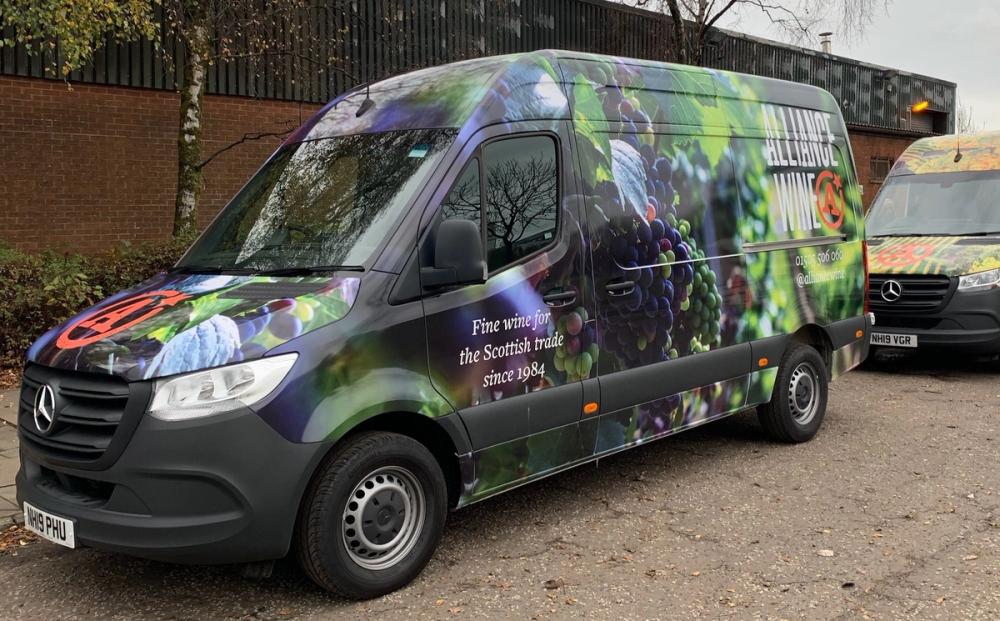
Alliance Wine is chomping at the bit to get out to its customers but also mindful of only doing so when they are ready to talk to them about their wine ranges
All three were also respectful and mindful that we are still operating in very uncertain times and that many operators are struggling on so many levels, particularly with the number of staff self isolating and that they also need to tread carefully and only introduce new ideas about wines and lists and changes as and when is appropriate.
“We have massive ambitions but are very mindful about where hospitality is at the moment,” says Spiers. “All we can do is stand by them and work with them as best we can.”
Both sides of the on-trade have also learnt a lot from the various stages of lockdown in 2020 where it was vital, and much appreciated, that Alliance was able to keep its customers as informed as they could about potential supply chain issues. If anything working together through those months of lockdown has actually strengthened their relationships, says Spiers.
Looking ahead

Alliance Wine has devised new training workshops for its on-trade customers that it will be rolling out in the coming months
Alliance’s on-trade team has also worked hard on developing a range of workshops to help restaurants and customers plan and get their wine lists and teams back on track, particularly as many will be operating with less staff. But again only as and when they want or ask for it. It has just completed its first workshop in London working with “budding” sommeliers on how to “understand, analyse and create a good wine list,” says Spiers. It will be running further courses during August and September.
“We are ready to help them with anything that can help them run their business. There is no point going to them and showing them lovely wines when they are so busy. It is asking them what would be helpful to them and their business,” she says.
Mackenzie adds: “It’s knowing what to do at the right time and sometimes not doing a lot is the right approach. It’s about providing them with the proactive support they need.”
“It is coming to them with solutions. That’s what we spend our brainstorming sessions coming up with,” adds Spiers. “We are unique in what we can do and we want to share that.”
- To find out more about Alliance Wine go to its website here.
